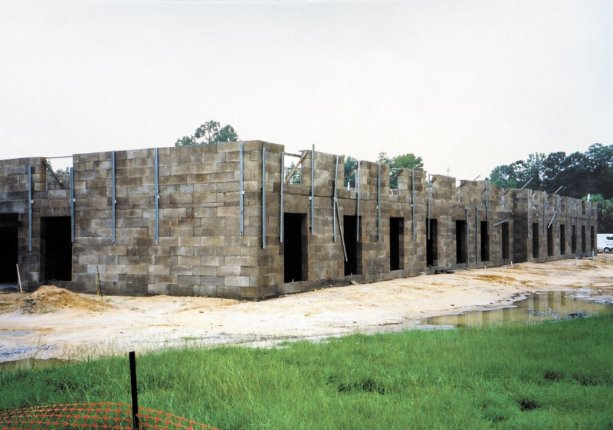A carbon-neutral cement product sounds like an oxymoron but it’s a reality with Nexcem’s Insulated Concrete Form (ICF) system.
Like the styrene ICF forms, Nexcem’s Durisol Build system is designed to be used as a block-like building system to form walls into which concrete is poured.
The difference is that Nexcem’s products are made with recycled virgin wood, culled from truss manufacturing facilities and ground up into small particles.
Those particles, ranging from 0.2 mm to 2 mm, are then treated to remove the sugars naturally inherent in wood to prevent mould and to deter insects which might be attracted by the food value.
"Also we need to ensure the wood bonds with the cement and cures," says Nexcem founder Vipul V. Acharya, who came across the concept while researching at the University of Waterloo.
Nexcem is a proprietary wood concrete material made from cement and bonded wood fiber and the secret sauce is the formula and additives which bond the materials together.
"Our ICF have better climate and sound insulation properties, will not rot and has many other benefits," says Acharya noting the process also diverts wood waste from landfill which helps make the final product virtually carbon neutral despite the use of cement.
"The carbon is sequestered in the product and locked in," he says.
Durisol has been used mostly in residential construction but is starting to gain traction with ICI projects.
"We’ve built schools for the Toronto District School Board, the Peel School Board and also Wellington County," he says.
Competition is tight in Europe where the concept is common and many manufacturers exist, but in North America there are many opportunities and he’s been working as far away as Australia.
Other Nexcem products include two inch thick by 24 inch by 48 inch sheets, panelist products for large projects and special pre-cut or assembled units for brick ledges, bearing units, short height units and lintel units.
The concept was born in Switzerland, he says, when during the post war years there was a need to rebuild quickly and efficiently in Europe.
"At first they just stacked the blocks but the problem they found is that over time you had load creep and the wall, especially if it carried the load of a house, would start to shrink and compress," he says. "Instead of abandoning it they poured concrete in to the holes and it made a much more stable structure."
Nexcem took that idea and has created the second generation with a better formulation of the mix.
"Like any ICF you need to run rebar horizontally and vertically," he says. "But the advantages are you can screw right into it. You don’t need strapping or a vapour barrier on the inside. You can just screw the drywall right to it. On the exterior you need to wrap it and strap it to create an air gap, then you can put on the siding."
The cementitious product is also hygroscopic, meaning it attracts and holds moisture and then releases it when the humidity drops.
"We install insulation on the exterior facing side to keep the interior side balanced," he said.
The blocks come in six inch and 14 inch thickness and the insulation factor ranges to R28 from R8 depending on configuration.
While there is some added cost on the materials end, there are gains in other areas, says Acharya.
"Styrofoam ICF might be say, for argument, $4 a square foot and we’re around $8," he says. "And of course people see that and say it’s high. But we use 25 per cent less concrete, so right away that’s reducing cost."
Durisol also allows for direct attachments because it’s more robust. It can be routed to run utility conduits and brings in up to 35 LEED points.



Recent Comments
comments for this post are closed